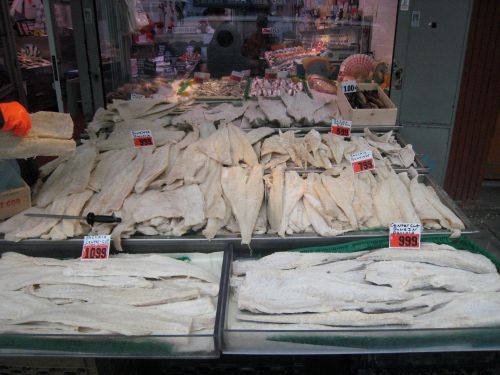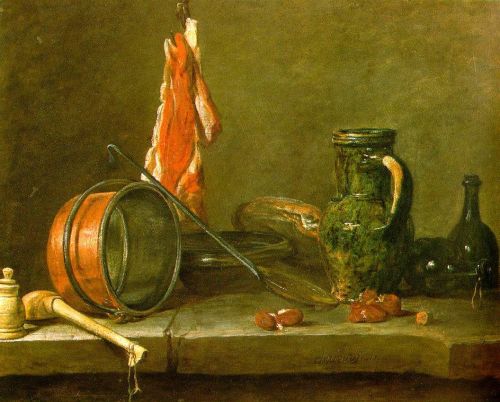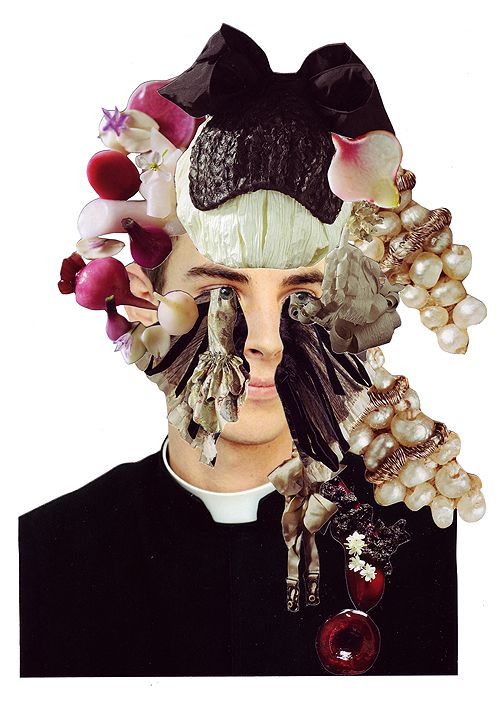
Here’s another excerpt from my book in progress, tentatively titled The Making of an Italian Cook.
Marcella and Me
My University Place apartment replaced our Long Island kitchen as the hub of my self-imposed cooking self-school. My new kitchen was a narrow sliver, but with one of those deep double porcelain sinks, which I loved for its old New York beauty. Aside from that I had my Royal Rose tenement-issue stove, which really was beyond the pale (when I moved into the place, in the late ’70s, the previous tenant had actually left a cooked steak in the broiler (he must have been in a hurry), which I discovered after trying to track down what I assumed was a dead mouse slowly dissolving under a floorboard. I could barely turn around in the small cooking space, but that was okay. I used my “dining room” table as a prep station and made out pretty well (God, I even ran a catering business from that apartment for a while, years later). I had a good set of cast iron skillets and a serious Wusthof knife set, complete with a blue canvas knife roll, that my father had bought me for a moving-in gift, one of the most opulent presents I’ve ever received.
Now instead of hanging out at bars with Larry Rivers, my main evening activity became, for a few months at any rate, making meatballs. I had watched Mo, my mother, make the things a zillion times, so I didn’t think I needed a recipe. Her side of the family is Sicilian, and she often made her father’s raisin and pine nut meatballs, which I just loved. So I was baffled that my first half dozen tries came out so miserably. They were hard and dry and just made me sad. What I didn’t realize, until I put some serious thought into the matter, was that the more compact the meat, the denser the meatball would be. Finally I got it. Don’t keep smacking them around, stop squeezing them so much, quit working the life out of the mix. Okay, good. Problem solved. But when I told Mo that I’d replaced her milk-soaked soft bread with dried breadcrumbs, she looked at me with a blend of amazement and disgust and, if I recall correctly, said, “Are you nuts?” What did I know? As it turned out, dried bread yields dry meatballs. I finally came up with very good meatballs, but in the process I realized that purchasing a few good cookbooks was in order.
The first book I bought was The Classic Italian Cookbook, by Marcella Hazan. It had been out for about five years, she was now famous, and everyone seemed to love her. How could I go wrong? But I did go wrong. I’ve thought long about this and have come to realize that Marcella Hazan and I, despite how lovely and truly interesting her recipes were, we, as people who cooked, were just not a good match. Our personalities clashed like crazy, from her pages to my soul. It was like going out on a date with someone you just knew from the start wasn’t your type, but you kept going back for more, hoping something would click.
I felt as if her recipes were dangling in space—and at times crashing down on my head like some outside grinding noise you hear but can’t trace the source of (hidden electrical wires? that traffic counting device on the corner?), the kind of noise that can be familiar but still upsetting. Why on earth was this so? I at first concluded that since Marcella didn’t write, or evidently speak, English well, and her husband translated most of her words, he, Victor, was standing between us. There was for me an impenetrable sternness in the pages, and he, after all, is a wine writer and therefore more of an academic than an artist. I believed at the time, back in the late ’70s, that his tone must have covered up some of Marcella’s free spirit. But I don’t know either of them, so I can’t attest to their personalities. It was just a hunch. And the more I delved into the book, the more I began to believe that she was as much to blame. (Later, when I learned she had been a chemistry major, I was almost sure of it.)
I was looking for a coaxing voice and a compelling story. As wonderful as her recipes sounded, I couldn’t find a way in. I wanted a vulnerability, a jiggle, an oops-a-braciole-just-rolled-under-the-counter-but-I’ll-serve-it-anyway spirit. I couldn’t find it. I wanted to know how her soul made her want to cook. I snooped as much as possible, trying to read between the lines, but with out much luck, so I finally decided to page through the book and just make every recipe she had that included anchovies. That was a plan.
Marcella Hazan does seem to admire anchovies. I made her orecchiette with broccoli and anchovy sauce, which looked like something my grandmother would have come up with, and it tasted great. I loved her roasted peppers with anchovies. My family made roasted peppers and always served anchovies, but to my recollection they never blended them together. I understood that my selected use of this big book had its limits, and that I was being unfair and ignorant, but I couldn’t help myself. Then my relationship with Marcella went from bad to worse.
This was, I believe, 1978, a year when vitello tonnato was raging in the suburbs. My mother made it a few times, and I went wild for it. It was the party dish supreme, replacing cheese fondue in many a Long Island mom’s repertoire, an expected cocktail hour offering on our block. My mother’s recipe for vitello tonnato, like much of her cooking that was not Southern Italian, came from Gourmet magazine.
In my crypt-like Manhattan apartment, I decided that was what I had to make, being the party girl I still was. I could cook it and invite a bunch of friends and have a hip little dinner. Plus the recipe contained anchovies, so I could continue with my theme approach to cooking with Marcella. So I checked the index, and there it was on page 276. It looked good, if possibly a bit expensive. Now, you have to understand that going out and purchasing a boneless veal roast at this time in my life was a bold decision. I was averaging around $40 or $50 in my bank account, whatever I could put away from my not so lucrative job as information phone gal at the Barnes & Noble store on 18th Street (this was of course pre-computer, so every time a customer called about a book, I’d have to physically run through the store and pull it off the shelf—boy, what an exhausting bore). At any rate, I trotted over to Ottomanelli and bought my two-or-so-pound roast with high hopes. I invited a few friends and told them to bring white wine (Soave Bolla, of course). I followed Marcella Hazan’s recipe exactly, expecting the result to taste as enticing as what my mother had made, but what I came out with was a big, sloppy mound of fishy cat food, with peculiar metallic and acidic undertones.
The veal itself, I realized, wasn’t the problem. That simmered up fairly well (low and slow were the instructions, and that worked), but after purchasing the veal, I had had no money left for the fancy Italian tuna I’d grown up eating and instead had bought cheap American tuna packed in who knows what, and a bottle of “olive oil” that most likely I could just as well have purchased at a hardware store. My friend Scott was the only person who liked the dish, and I could tell he wasn’t just being kind, but then he was a person who had spent two weeks in Paris eating every meal at McDonald’s. For me it was such a disappointment, I actually cried, a long, sloppy wine-drunk cry. I sensed that my low-grade purchases were the problem, but I blamed Marcella anyway.
God damn it, why wasn’t this woman helping me more? Why couldn’t I taste and see what I was doing? I started to feel culinarily demented. I made perfectly decent, even good Italian food, in my mother’s kitchen and with no book or guidance except my nose, hands, and memory. Was it Marcella’s lack of Southern hospitality? I decided that must be the case. I was stuck in a rut. I briefly shut down my studies and let a dark shadow fall over my sharp Wusthof knives. But not for long.
Read Full Post »

















